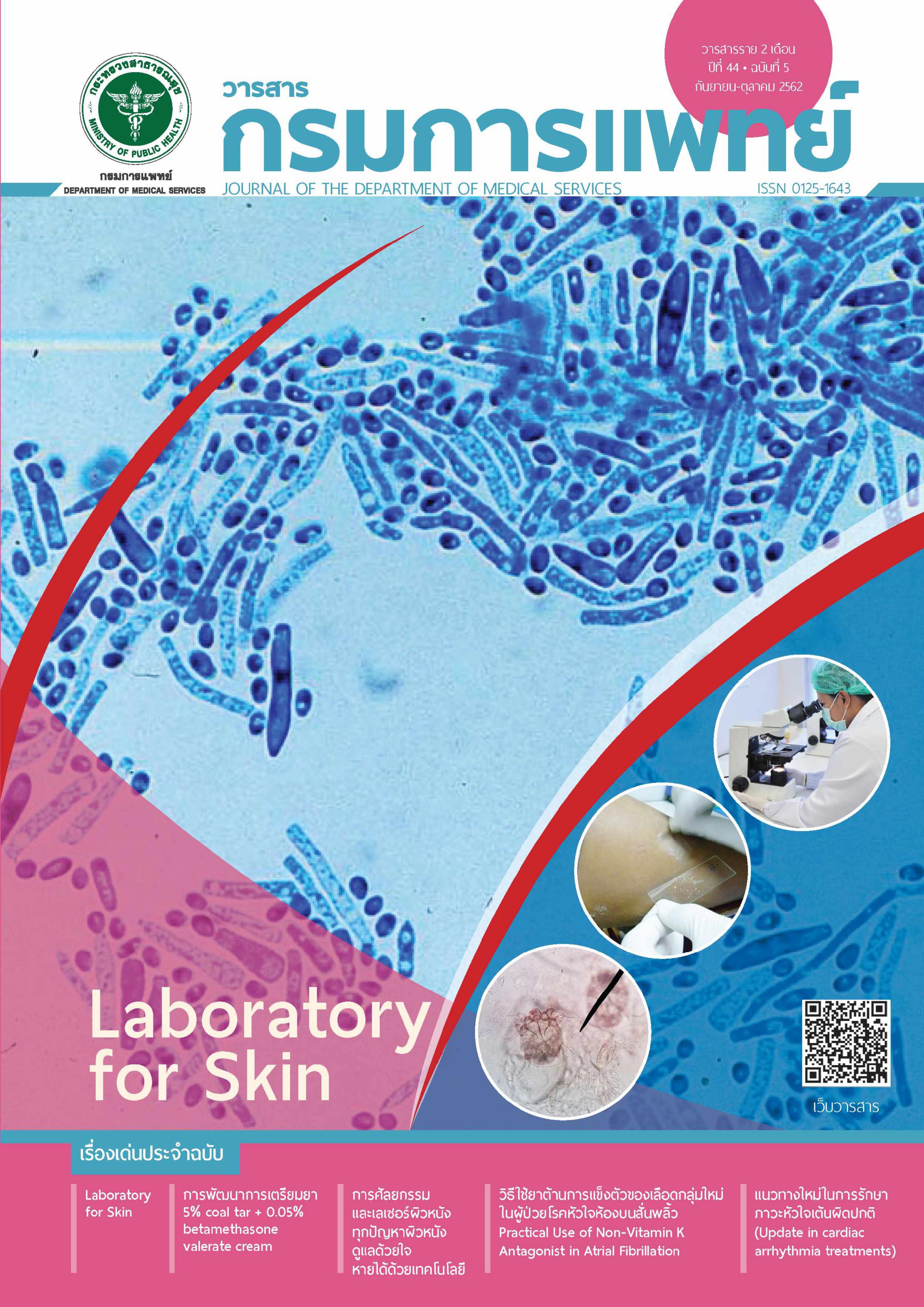Efficacy of MOPD ED Triage Training Program on Triage Accuracy of Nurses and Emergency Medical Staff in Maesai District Hospital
Keywords:
MOPD ED Triage, Triage, Emergency department, TrainingAbstract
Background: Triage is one of the most important streaming strategies to manage patient flow in the emergency department. Triage knowledge and skill of practicing staff are crucial to achieve the highest performance and accurate triage. Triage training program may improve the accuracy of emergency patient’s triage. Objective: This study aimed to comparethe accuracy of triage by nurses and emergency medical staff before and after the MOPD ED Triage training program. Methods: Single group interrupted time series study was conducted on nurses and emergency medical staff in emergencydepartment, Maesai district hospital from September to November, 2018. The participants underwent pretest prior to the MOPD ED Triage training, and was followed by the posttest session immediately, at 2 and at 4 weeks after training. Triage accuracy in terms of number of items and trend of triage accuracy overtime was analyzed using multivariable multi-level ordinal logistic regression. Results: Twenty-two emergency medical staff and nurses were included. Prior to the training, the participants correctly identified 312 items (70.9%), compared to 350 items (79.6%) of post-training. The number of undertriage items were significantly reduced after the training (86 (19.6%) vs. 48 (10.9%). The number of overtriage items did not significantly improve despite the training. Pretest and posttest differences were significantly different at p-value <0.001. The overall triage accuracy of the participants started to fall at 4 weeks after training.Conclusion: MOPD ED Triage training program can effectively improve the triage accuracy of nurses and emergency medical staffs. Therefore, regular triage training program should be included in the emergency department policy.
References
Sirisamutr PWT, Sethasathien A. A nationwide survey of Thailand emergency departments triage systems. 2018 Feb 1 [cited 2018 Oct 7]; Available from: https://www. omicsonline.org/proceedings/a-nationwide-survey-ofthailand-emergency-departments-triage-systems-82288.html
Emergency Nurses Association Position Statement: Crowding in the Emergency Department. J Emerg Nurs 2006;32:42–7.
Travers DA, Waller AE, Bowling JM, Flowers D, Tintinalli J. Five-level triage system more effective than three-level in tertiary emergency department. J Emerg Nurs JEN off Publ Emerg Dep Nurses Assoc 2002; 28:395–400.
Department of medical services, Ministry of public health. Guideline for ER service delivery. Nonthaburi: Bureau of medical technical and academic affairs, Department of medical services, Ministry of public health; 2561.
Nakakul N. Effectiveness of implementing the emergency severity index for patient triage, Lampang hospital. Master Nurs Sci Adult Nurs Chiang Mai Univ. 2014;
Chen S-S, Chen J-C, Ng C-J, Chen P-L, Lee P-H, Chang W-Y. Factors that influence the accuracy of triage nurses’ judgement in emergency departments. Emerg Med J EMJ 2010; 27:451–5.
Soontorn T, Sitthimongkol Y, Thosingha O, Viwatwongkasem C. Factors Influencing the Accuracy of Triage by Registered Nurses in Trauma Patients. Pac Rim Int J Nurs Res 2018; 22:120–30.
Loketkawi T. Emergency Department Triage. Documents. Criteria and procedures for the separation of emergency. Natl Inst Emerg Med; 2012. (in Thai)
Considine J, Botti M, Thomas S. Do knowledge and experience have specific roles in triage decision-making? Acad Emerg Med Off J Soc Acad Emerg Med 2007; 14:722–6.
Patel VL, Kaufman DR, Arocha JF. Emerging paradigms of cognition in medical decision-making. J Biomed Inform 2002;
Downloads
Published
How to Cite
Issue
Section
License
บทความที่ได้รับการตีพิมพ์เป็นลิขสิทธิ์ของกรมการแพทย์ กระทรวงสาธารณสุข
ข้อความและข้อคิดเห็นต่างๆ เป็นของผู้เขียนบทความ ไม่ใช่ความเห็นของกองบรรณาธิการหรือของวารสารกรมการแพทย์


